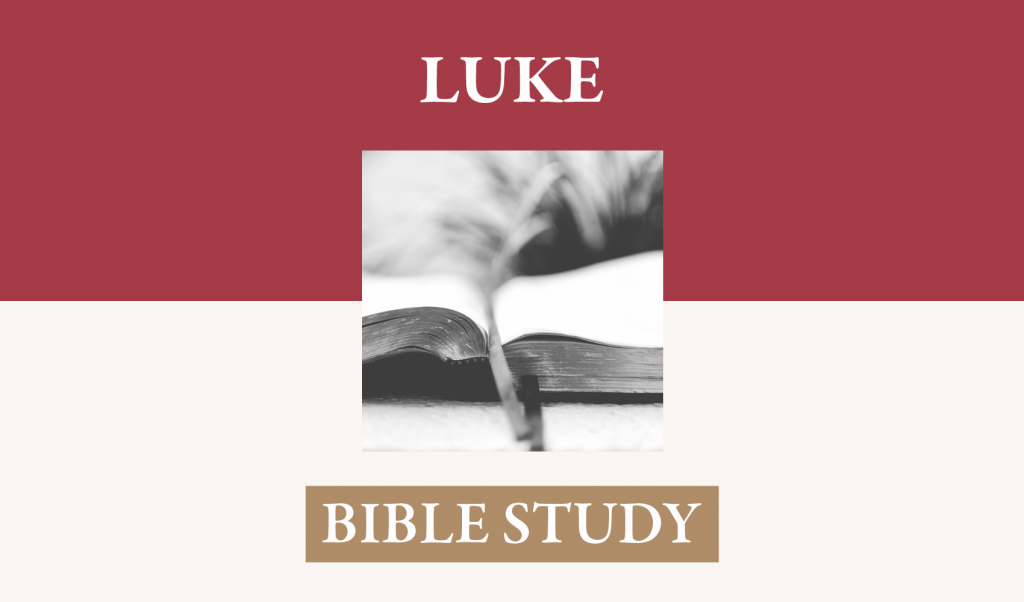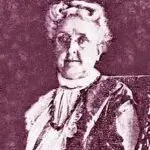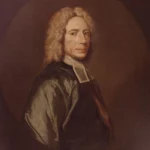Biblical Truth: The birth of Jesus is special because He is God’s Son, the Savior.
Jesus is His Name: Luke 1:26-31.
[26] Now in the sixth month the angel Gabriel was sent from God to a city in Galilee called
The announcement to Mary has two key parallels. First, there is the parallel to Old Testament birth announcements. The account recalls God’s past great acts. Second is the parallel with the announcement to Zechariah [1:5-25]. The entire passage stands in parallelism to the earlier birth announcement, but the unusual nature of the birth and the future call of the child show that Jesus is superior to John. The mood of the passage is very different from the earlier announcement. In contrast to the public setting of the temple in the middle of
[26] God commissions the angel Gabriel, who made the birth announcement to Zechariah, to deliver a similar message to Mary. Gabriel is sent from God’s heavenly realm to Mary. The visit occurs in the Galilean region, about 45 to 85 miles north of
[27] The angel appears to a young woman, Mary. Luke uses two simple descriptions of her. First, she is a virgin. Her condition receives confirmation in 1:34, where she confesses her lack of sexual experience. Matthew 1:23 agrees with this description of Mary. Second, Mary is engaged to Joseph. The phrase about betrothal is worded like Deut. 22:23 and refers to the first stage of a two-stage Jewish marriage process. The initial stage of engagement (or betrothal) involved a formal, witnessed agreement to marry and a financial exchange of a bride price. At this point, the woman legally belongs to the groom and is referred to as his wife. About a year later, the marriage ceremony takes place when the husband takes the wife home. A woman could become betrothed as early as age twelve but Luke does not give Mary’s age. Mary is engaged to Joseph of the house of David. In 2:4, Luke also attributes Davidic background to Joseph. Thus it is clear that Luke derives the Davidic heritage of Jesus from Joseph, even though Jesus is not truly Joseph’s son. But this is not a great problem. Legally, since Mary at the time of her engagement is Joseph’s wife, any child born to Mary would be regarded as Joseph’s, if he accepted care for the child.
[28] Gabriel greets Mary and declares her a recipient of God’s favor. He appears to her in an unspecified indoor setting. He greets her with two terms that emphasize grace. Mary is addressed as the favored one! (literally, “full of grace”). In this context, Mary is the special object of God’s favor. Second, Gabriel assures Mary by promising the presence of the Lord God which emphasizes the certainty of God’s involvement with Mary in bringing forth a great child. Gabriel wishes to encourage Mary that God will be with her through all the events the angel reveals.
[29-30] Mary is perplexed by the angel’s initial remarks. She begins to consider what is happening to her and ponders the angel’s greeting. What was God going to do to her? The angel deals with Mary’s concerned curiosity by telling her do not be afraid. This word of comfort shows that her curiosity about the greeting also caused her anxiety. Before turning to the discussion of the coming child, Gabriel adds one note of explanation to his call to be calm. Mary has found favor with God. As an expression of divine working, favor signifies God’s gracious choice of someone through whom God does something special. In the Old Testament, the phrase often involves a request granted on the condition that someone had favor with God. However, here this favor is announced without any hint of a request. It is freely bestowed. Mary is about to receive freely the special favor of God. She is a picture of those who receive God’s grace on the basis of His kind initiative.
[31] Mary now receives a specific word about the grace that God will extend to her. The first part of this announcement is in verses 31-33. Verse 31 predicts the birth of a child and verses 32-33 describes his ministry. The form of the angelic announcement that the virgin Mary shall bear a son follows the Old Testament pattern: Genesis 16:11; Isaiah 7:14; and Judges 13:5.
Jesus is God’s Son: Luke 1:32-35.
[32] "He will be great and will be called the Son of the Most High; and the Lord God will give Him the throne of His father David; [33] and He will reign over the house of Jacob forever, and His kingdom will have no end." [34] Mary said to the angel, "How can this be, since I am a virgin?" [35] The angel answered and said to her, " The Holy Spirit will come upon you, and the power of the Most High will overshadow you; and for that reason the holy Child shall be called the Son of God. [NASU]
[32] The significance of Jesus’ birth is laid out in two stages. The early part of the announcement describes Jesus’ future ministry and position. The two stages [32-33 and 35] of the description are divided by the question of Mary in verse 34. The Old Testament background to this announcement is strongly regal and Davidic, with much of the language having a parallel in 2 Samuel 7:9,13-14,16. The individual focus of the regal declaration parallels 1 Chronicles 17:11-14. Both 2 Samuel 7 and 1 Chronicles 17 announce the Davidic covenant. Fulfillment comes in Jesus. Great when used by itself to describe someone refers only to God in the Old Testament. The name, Son of the Most High, occupies an emphatic position because it precedes the verb. It is simply another way of saying Son of God since Most High is another way to refer to God’s supreme authority as the Most High. Jesus’ Davidic origin and His reign’s permanence receive attention in the next part of the announcement. He is to receive the throne of His father David, a picture of majestic rule. The Davidic throne is clearly a regal image drawn from the Davidic covenant’s promise of a son, a house, and an everlasting rule. A fundamental concept of Lucan theology is the kingdom rule of the promised Davidic son. The regal presentation of Jesus is foundational to what is said about the risen Lord and the message of the kingdom in Acts, a kingdom that has both present and future elements for Luke. With the coming of the king, the kingdom draws near. How this concept is presented and developed in Luke is key to understanding Luke’s portrayal of God’s plan. Luke clearly understands Jesus as the fulfillment of fundamental Jewish hopes for a ruler and redeemer. The ruling position and activity of Jesus in God’s plan is the fundamental point of the angelic description of Jesus.
[33] Jesus not only has a regal position, but He also has a realm and an everlasting reign. His position is ruler over the nation of
[34] Mary questions how this birth can occur, given that she is a virgin. She does not doubt the announcement, for she does not ask for a sign as Zechariah did. Rather she is puzzled as to how this birth can occur, a question that causes the angel to elaborate.
[35] Gabriel replies and proclaims direct divine involvement in the coming Davidic ruler’s conception. The verse has a three-part structure: the divine work of conception comes in two parallel lines, while descriptions of the result and significance of that conception follow. This work parallels the reference in 1:15 to the Spirit’s filling of
Jesus is God’s Gift: Luke 2:4-7.
[4] Joseph also went up from Galilee, from the city of
[4] The attention narrows specifically to the family of the child, Joseph and Mary. The reference to their going up from
[5] Mary made the census trip with Joseph, despite her condition. The reference to Mary as engaged means that the marriage is not yet consummated and thus implies a virgin birth. Although the extent of her pregnancy is not given, her condition may suggest why she accompanied Joseph, since the birth of their child was near and she would want to be with her husband when the child is born.
[6-7] The birth of Jesus is told with simplicity. The birth itself is told briefly without any details as to why the couple stays in the stable. Luke describes Jesus’ birth in very simple, unadorned terms. The setting presents a very humble beginning for the future messianic king. The newly born child is wrapped in swaddling clothes. The custom was to take strips of clothes and bind them around the child to keep the limbs straight. Swaddling prepares us for the shepherds’ recognition of the child [2:12], as does the mention of manger. The child is laid in a manger, probably a feed trough normally used for animals, since that is the normal meaning of the term. The animal room that Joseph and Mary found may have been either a stable next to the place of lodging or a cave, since the use of caves for stables was common. Ancient tradition associates Jesus’ birth with a cave. A basilica was erected over a cave site in
The overruling providence of God appears in this simple fact. He orders things in heaven and earth. He turns the hearts of kings to do His will. He overruled the time when Augustus decreed the taxation. He directed the enforcement of the decree in such a way that Mary had to be in
Questions for Discussion:
1. Gabriel reveals two things about the identity of Jesus in verse 32. What is significant about these two things?
2. Compare Mary’s response to Gabriel in verse 34 to the response of Zechariah in verse 18. What is different about Mary’s response that she receives no rebuke like Zechariah did in verse 20?
3. Why is verse 35 called “one of the most Christologically significant verses in the book”?
4. Why do you think Luke was so concerned to show the birth of Jesus as the fulfillment of the Davidic covenant? Compare Luke 1:32-33 with 2 Samuel 7:9-16 and 1 Chronicles 17:10b-14.
References:
Luke, Darrell Bock, Baker Books.
Commentary on the Gospel of Luke, Norval Geldenhuys, Eerdmans.
Gospel According to Luke, William Hendriksen, Baker Books.

















